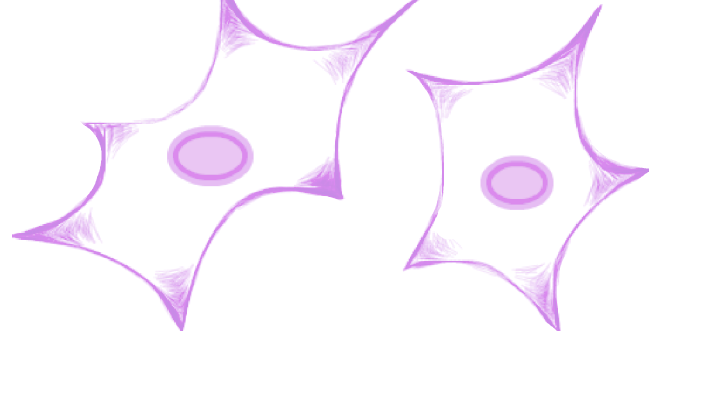Cell Senescence Entries for SOD1
- Cell Types
- Lung fibroblast
- Cell Lines
- WI-38, WI38-SV40
- Cancer Cell?
- No
- Method
- Knockdown
- Type of senescence
- Unclear
- Senescence Effect
- Inhibits
- Primary Reference
- Blander et al. (2003) Superoxide dismutase 1 knock-down induces senescence in human fibroblasts. J Biol Chem 278(40)38966-9 (PubMed)
SOD1 Gene Information
- HGNC symbol
- SOD1
- Aliases
- ALS; ALS1; IPOA
- Common name
- superoxide dismutase 1
- Entrez Id
- 6647
- Description
- The protein encoded by this gene binds copper and zinc ions and is one of two isozymes responsible for destroying free superoxide radicals in the body. The encoded isozyme is a soluble cytoplasmic protein, acting as a homodimer to convert naturally-occuring but harmful superoxide radicals to molecular oxygen and hydrogen peroxide. The other isozyme is a mitochondrial protein. In addition, this protein contains an antimicrobial peptide that displays antibacterial, antifungal, and anti-MRSA activity against E. coli, E. faecalis, S. aureus, S. aureus MRSA LPV+, S. agalactiae, and yeast C. krusei. Mutations in this gene have been implicated as causes of familial amyotrophic lateral sclerosis. Rare transcript variants have been reported for this gene. [provided by RefSeq, Jul 2020].
SOD1 Ontologies
- Gene Ontology
-
Process: GO:6801; superoxide metabolic process
GO:19430; removal of superoxide radicals
GO:7605; sensory perception of sound
GO:43065; positive regulation of apoptotic process
GO:6879; cellular iron ion homeostasis
GO:10033; response to organic substance
GO:7283; spermatogenesis
GO:6749; glutathione metabolic process
GO:43085; positive regulation of catalytic activity
GO:72593; reactive oxygen species metabolic process
GO:1890; placenta development
GO:60088; auditory receptor cell stereocilium organization
GO:1895; retina homeostasis
GO:1819; positive regulation of cytokine production
GO:43410; positive regulation of MAPK cascade
GO:7566; embryo implantation
GO:43087; regulation of GTPase activity
GO:8217; regulation of blood pressure
GO:43524; negative regulation of neuron apoptotic process
GO:48538; thymus development
GO:42542; response to hydrogen peroxide
GO:9408; response to heat
GO:45859; regulation of protein kinase activity
GO:7569; cell aging
GO:7626; locomotory behavior
GO:45541; negative regulation of cholesterol biosynthetic process
GO:51881; regulation of mitochondrial membrane potential
GO:46716; muscle cell cellular homeostasis
GO:302; response to reactive oxygen species
GO:303; response to superoxide
GO:1541; ovarian follicle development
GO:1975; response to amphetamine
GO:2262; myeloid cell homeostasis
GO:6979; response to oxidative stress
GO:7568; aging
GO:8089; anterograde axonal transport
GO:8090; retrograde axonal transport
GO:9410; response to xenobiotic stimulus
GO:19226; transmission of nerve impulse
GO:31667; response to nutrient levels
GO:32287; peripheral nervous system myelin maintenance
GO:32930; positive regulation of superoxide anion generation
GO:33081; regulation of T cell differentiation in thymus
GO:34465; response to carbon monoxide
GO:34599; cellular response to oxidative stress
GO:35865; cellular response to potassium ion
GO:40014; regulation of multicellular organism growth
GO:42554; superoxide anion generation
GO:43066; negative regulation of apoptotic process
GO:45471; response to ethanol
GO:46620; regulation of organ growth
GO:46677; response to antibiotic
GO:46688; response to copper ion
GO:48678; response to axon injury
GO:50665; hydrogen peroxide biosynthetic process
GO:50728; negative regulation of inflammatory response
GO:50766; positive regulation of phagocytosis
GO:60047; heart contraction
GO:60052; neurofilament cytoskeleton organization
GO:60087; relaxation of vascular associated smooth muscle
GO:71276; cellular response to cadmium ion
GO:71318; cellular response to ATP
GO:97332; response to antipsychotic drug
GO:1902177; positive regulation of oxidative stress-induced intrinsic apoptotic signaling pathway
Cellular component: GO:5654; nucleoplasm
GO:5829; cytosol
GO:5634; nucleus
GO:5737; cytoplasm
GO:31410; cytoplasmic vesicle
GO:32991; protein-containing complex
GO:5886; plasma membrane
GO:5739; mitochondrion
GO:5759; mitochondrial matrix
GO:5615; extracellular space
GO:1904115; axon cytoplasm
GO:5777; peroxisome
GO:5576; extracellular region
GO:70062; extracellular exosome
GO:5758; mitochondrial intermembrane space
GO:43025; neuronal cell body
GO:5764; lysosome
GO:30141; secretory granule
GO:31045; dense core granule
GO:32839; dendrite cytoplasm
GO:43005; neuron projection
Hide GO termsFunction: GO:46872; metal ion binding
GO:16491; oxidoreductase activity
GO:4784; superoxide dismutase activity
GO:8270; zinc ion binding
GO:5515; protein binding
GO:42802; identical protein binding
GO:16209; antioxidant activity
GO:5507; copper ion binding
GO:31267; small GTPase binding
GO:51087; chaperone binding
GO:19899; enzyme binding
GO:30346; protein phosphatase 2B binding
Homologs of SOD1 in Model Organisms
- Caenorhabditis elegans
- sod-5
- Danio rerio
- sod1
- Drosophila melanogaster
- Sod
- Mus musculus
- Sod1
- Rattus norvegicus
- Sod1
- Saccharomyces cerevisiae
- SOD1
- Schizosaccharomyces pombe
- sod1
In other databases
- GenAge model organism genes
- GenAge human genes
- This gene is present as SOD1
- GenDR gene manipulations
- A homolog of this gene for Saccharomyces cerevisiae is present as SOD1
- LongevityMap
- This gene is present as SOD1
External links
- OMIM
- 147450
- Ensembl
- ENSG00000142168
- Entrez Gene
- 6647
- UniGene
- 443914
- 1000 Genomes
- 1000 Genomes
- HPRD
- GenAtlas
- SOD1
- GeneCards
- SOD1
